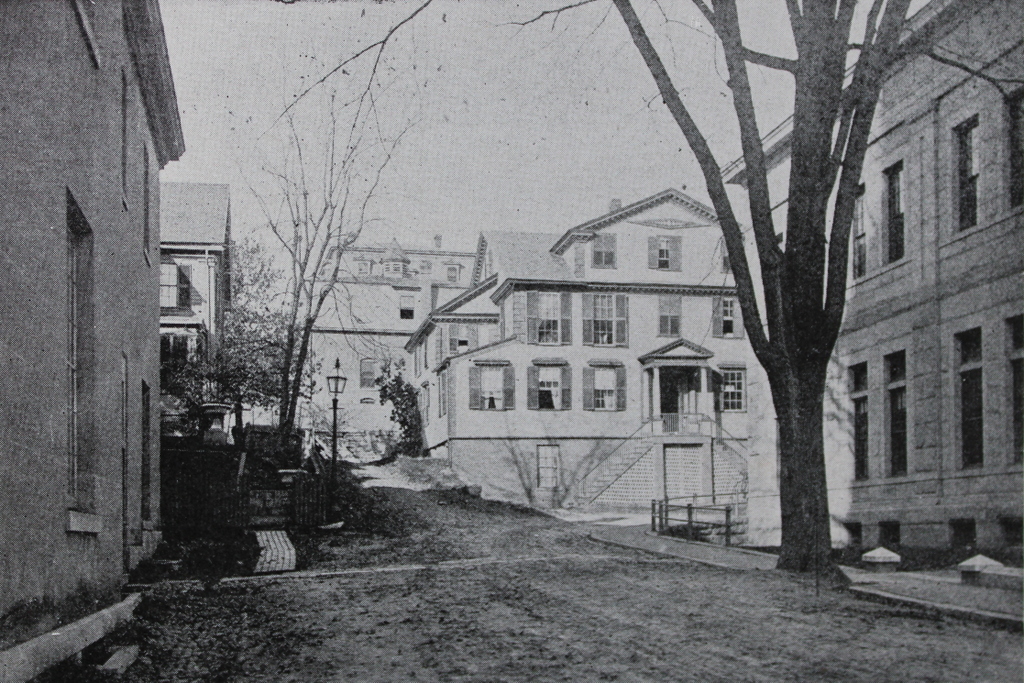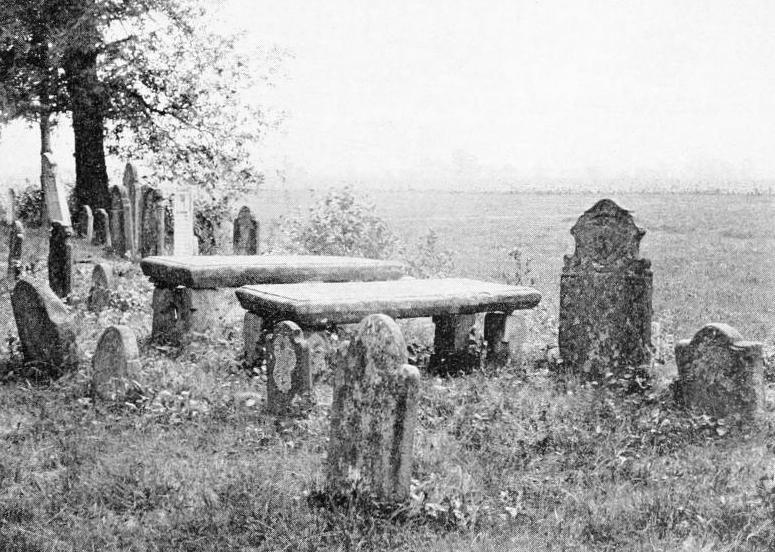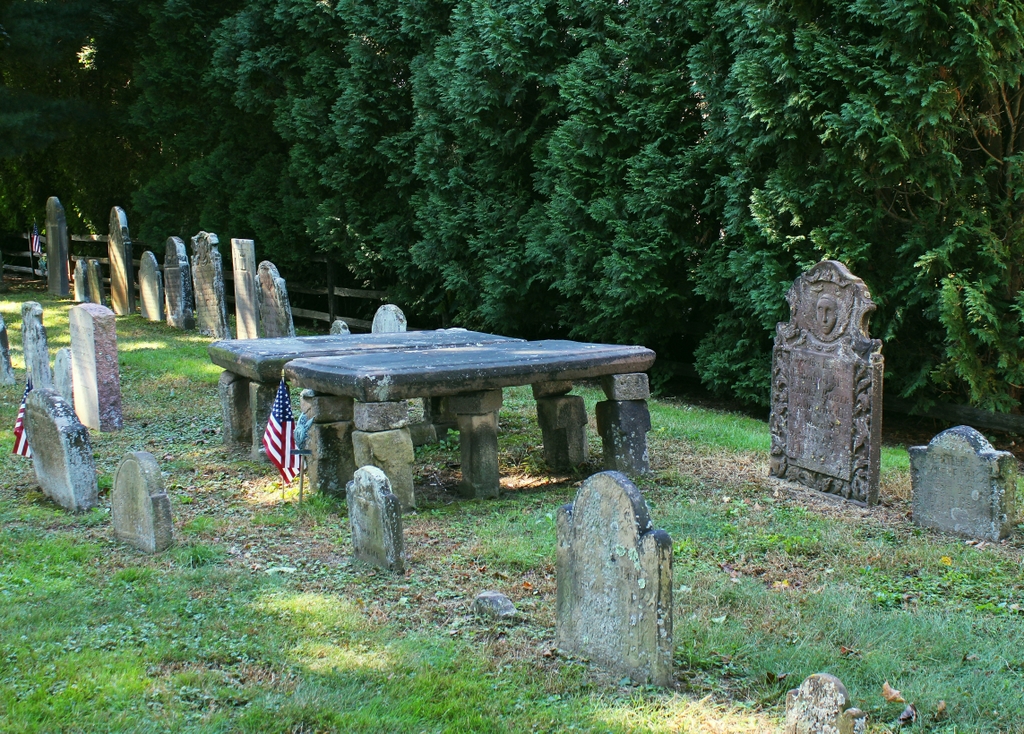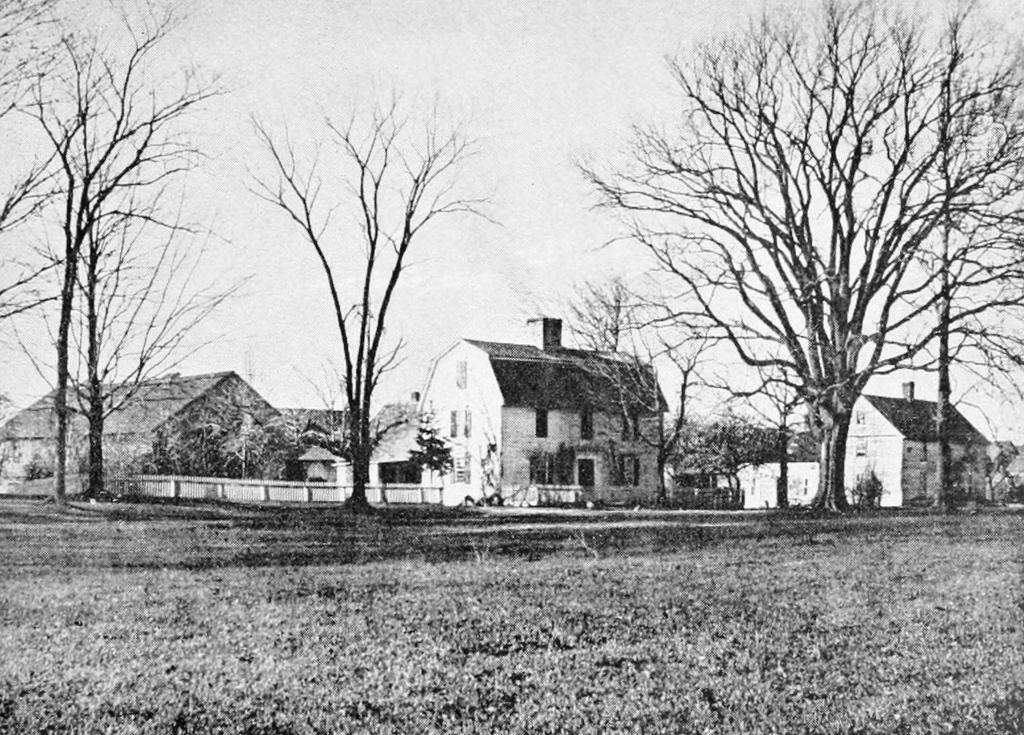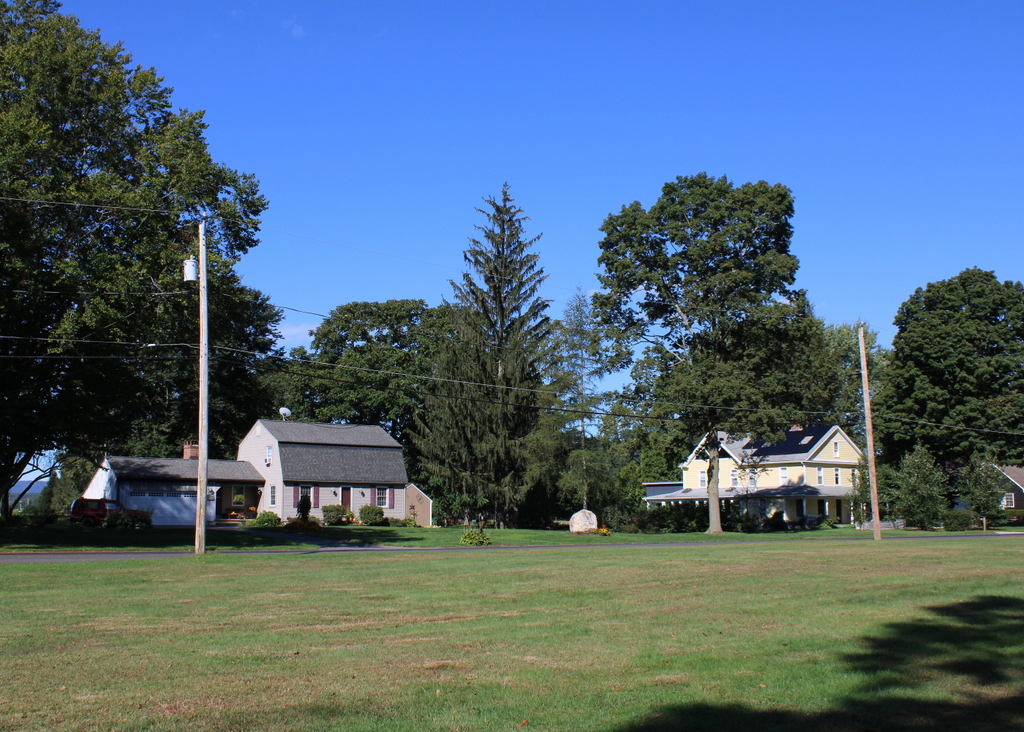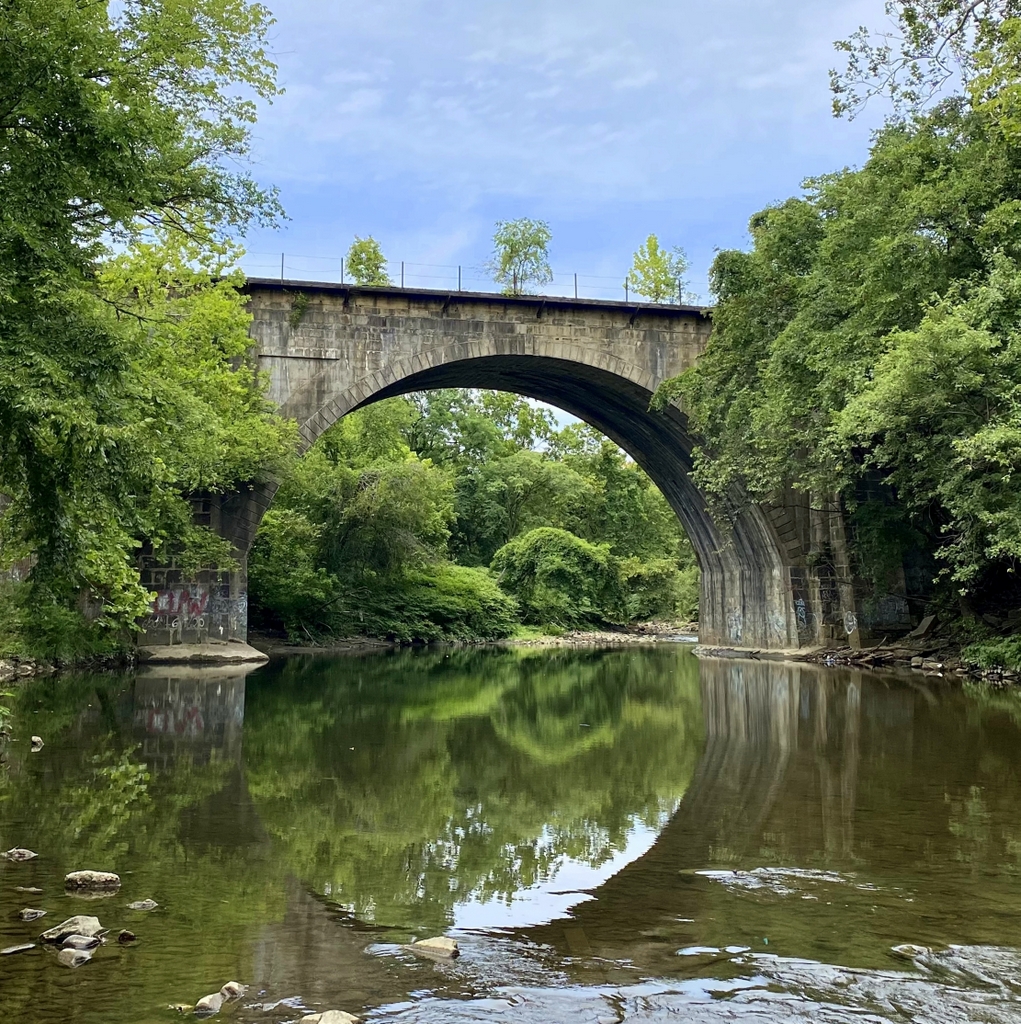Boston Light on Little Brewster Island in Boston Harbor, around 1906. Image courtesy of the Library of Congress, Detroit Publishing Company Collection.
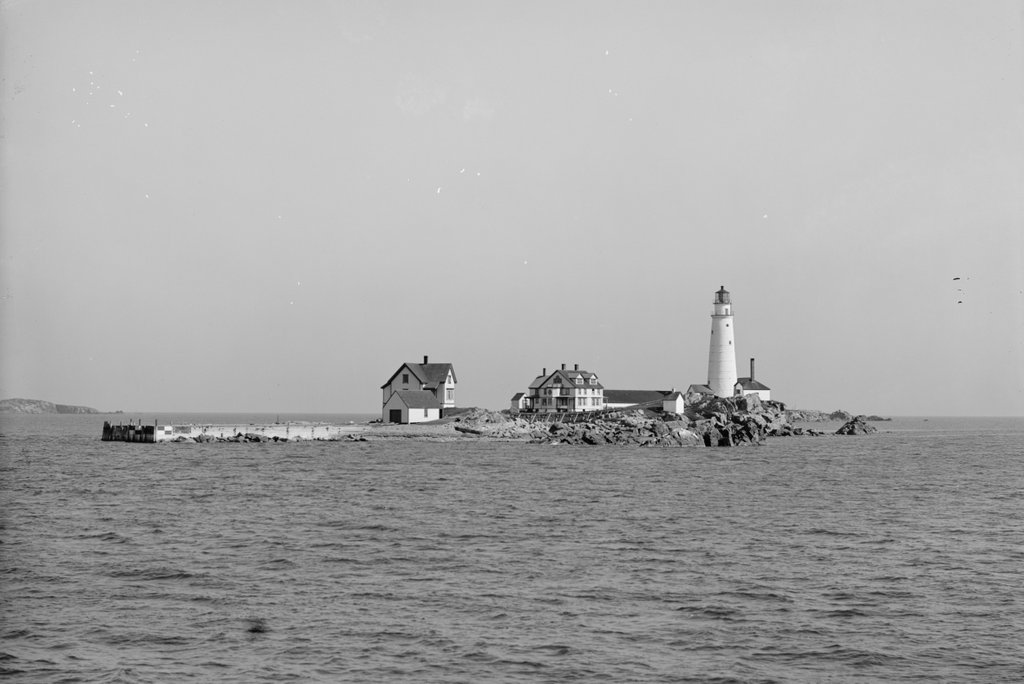
The scene in 2021:
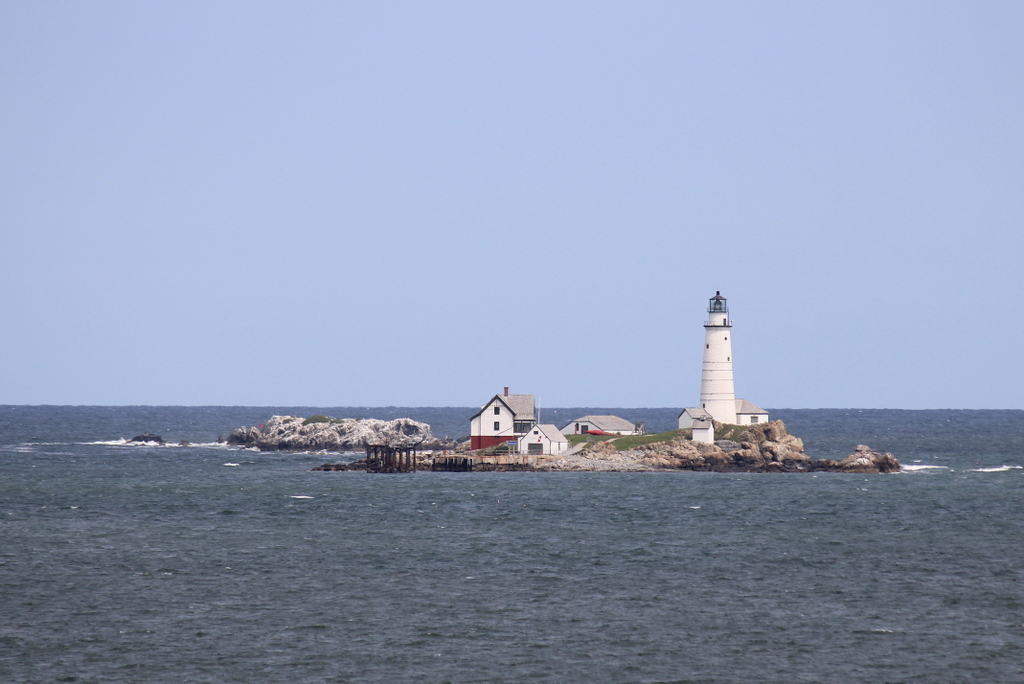
These two photos were not taken from the exact same angle; the first one was probably taken from a boat near the island, while the second one was taken with a telephoto lens from about two miles away on Georges Island. But, they both show essentially the same view of Little Brewster Island, the site of the first lighthouse in the present-day United States and the second-oldest existing lighthouse in the country.
During the colonial era, Boston was one of the most important seaports in British North America. Boston benefited from a large natural harbor, protected from the open ocean by a number of islands and peninsulas, but these same landforms also posed hazards to ships entering and leaving the harbor. So, to protect ships and the lives of their sailors, the first lighthouse in the British colonies was constructed here on Little Brewster Island, a small outcropping near the outer edge of the harbor. It was about 60 feet tall, built of rubble masonry, and it was lit for the first time on September 14, 1716.
The occasion was noted in The Boston News-Letter three days later, with the paper describing:
Boston, By vertue of An Act of Assembly made in the First Year of His Majesty’s Reign, For Building & Maintaining a Light House upon the Great Brewster [sic] (called Beacon Island) at the Entrance of the Harbour of Boston, in order to prevent the loss of the Lives & Estates of His Majesty’s Subjects; The said Light House has been built; And on Fryday last the 14th Currant the Light was kindled, which will be very useful for all Vessels going out and coming in to the Harbour of Boston, or any other Harbours in the Massachusets-Bay, for which all Masters shall pay to the Receiver of Impost, One Peny per Ton Inwards, and another Peny Outwards, except Coasters, who are to pay Two Shillings each, at their clearing Out. And all Fishing Vessels, Wood Sloops, etc. Five Shillings each by the year.
The first lighthouse keeper was George Worthylake, but he would soon become the first American lighthouse keeper to die in the line of duty. On November 3, 1718, he was returning to the lighthouse accompanied by his wife Ann and their daughter Ruth, along with an enslaved man, a servant, and a friend of the family. They took a sloop back to the vicinity of island, then boarded a canoe to make their landing. However, the canoe capsized, and all six people drowned.
Here again, The Boston News-Letter reported the tragedy:
Boston, On Monday last the 3d Currant an awful and Lamentable Providence fell out here, Mr. George Worthylake (Master of the Light-House upon the Great Brewster (called Beacon-Island) at the Entrance of the Harbour of Boston) Anne his Wife, Ruth their Daughter, George Cutler, a Servant, Shadwell their Negro Slave, and Mr. John Edge a Passenger; being on the Lord’s Day here at Sermon, and going home in a Sloop, drop Anchor near the Landing place and all got into a little Boat or Cannoo, designing to go on Shoar, but by Accident it overwhelmed, so that they were Drowned, and all found and Interred except George Cutler.
Although the article does not mention the specific burial place, George, Ann, and Ruth were all buried in Copp’s Hill Burying Ground, beneath a triple headstone that still survives today.
Aside from this article in the News-Letter, other writers covered the event. Perhaps most famously, 12-year-old Benjamin Franklin wrote a ballad, which he titled “The Lighthouse Tragedy.” No copies of the poem are known to survive, but in his autobiography Franklin referenced this and another similar poem that he wrote about Blackbeard, observing that:
They were wretched stuff, in the Grub-street-ballad style; and when they were printed he sent me about the town to sell them. The first [the lighthouse poem] sold wonderfully, the event being recent, having made a great noise. This flattered my vanity; but my father discouraged me by ridiculing my performances, and telling me verse-makers were generally beggars. So I escaped being a poet, most probably a very bad one.
In the meantime, the lighthouse continued in operation under a new keeper, and in 1719 a cannon was installed on the island for use as a fog signal. The tower was badly damaged by a fire in 1751, but it was subsequently repaired and remained in use until the start of the American Revolution. It was ultimately destroyed by the British on July 13, 1776, following their evacuation of Boston several months earlier.
Little Brewster Island remained devoid of a lighthouse for the rest of the American Revolution, but as the war was winding down in 1783 the Massachusetts legislature authorized the funding to construct a new lighthouse here. It was completed by the end of the year, and like its predecessor it was built of rubble masonry. However, it was somewhat taller, standing 75 feet in height. This tower, with some alterations over the years, is still standing today, as shown in the two photos in this post.
The lighthouse was completed prior to the current U.S. Constitution. At the time, the national government had very limited powers, so matters such as lighthouses were the responsibility of the individual states. Under the new Constitution, though, this became a part of the role of the federal government, which took over the operation of Boston Light in 1790.
Over the years, the exterior appearance of the lighthouse changed several times. In 1809, in response to large cracks in the walls, six iron bands were installed around the tower in order to provide additional structural support. Then, in 1859 the height of the tower was increased to 89 feet, and a new second-order Fresnel lens was installed in the lantern. Also during this time, the interior of the tower was lined with brick, and a brick entryway was added to the base of the tower.
By the time the first photo was taken around 1906, the lighthouse was joined by a number of other buildings on the island. Among these were two houses for the lighthouse keepers, along with ancillary structures such as the fog signal, cistern, oil house, and boathouse. The boathouse was situated next to a pier, and it was equipped with a marine railway. At the time, the light station was staffed by a head keeper and two assistant keepers, and they often lived here with their families as well.
Although still in active use as a lighthouse, the importance of Boston Light had diminished somewhat by the time this photo was taken. Around the turn of the 20th century, most large vessels began taking a more northerly channel into Boston Harbor, bypassing the old lighthouse. To accommodate this traffic, a new lighthouse was constructed in 1905 at the Graves, a rocky ledge about three miles to the northeast of Boston Light. This new lighthouse was taller than Boston Light, and it was also equipped with a larger first-order Fresnel lens.
Despite these changes in shipping routes, Boston Light remained an important lighthouse. There were some changes here in 1939, when the U.S. Lighthouse Service was absorbed by the Coast Guard, and there were further changes during World War II, when the light was extinguished for security purposes, although it was relit after the war. Then, in the postwar era, the role of lighthouse keepers started to become redundant, and lighthouses across the country were steadily automated, which eliminated the need for light stations that were staffed full time. However, just as Boston Light was the first lighthouse in the country, it was also the last one to be automated, in 1998.
Today, this scene is still easily recognizable from the first photo more than 115 years later. The large duplex keeper’s house is gone, having been deliberately burned in 1960, and the pier was destroyed during the blizzard of 1978. Overall, though, most of the other buildings are still here, including the 1884 keeper’s house, the 1899 boathouse, the 1889 oil house, and the 1876 fog signal building, which now also houses a generator. And, of course, the lighthouse is still here, with few exterior changes aside from the removal of one of the metal bands, leaving only five in its current appearance. It is the second oldest active lighthouse structure in the country, predated only by the 1764 Sandy Hook Light in New Jersey.
Despite being automated in 1998, Boston Light is still staffed by a resident keeper, although this is largely a ceremonial role. Along with most of the other harbor islands, Little Brewster Island is now part of the Boston Harbor Islands National Recreation Area. Unlike some of the larger islands, there is no ferry service or public access to Little Brewster, although the lighthouse can be seen from passing boats, from the mainland in Hull, or from Georges Island, as shown in the present-day photo.

